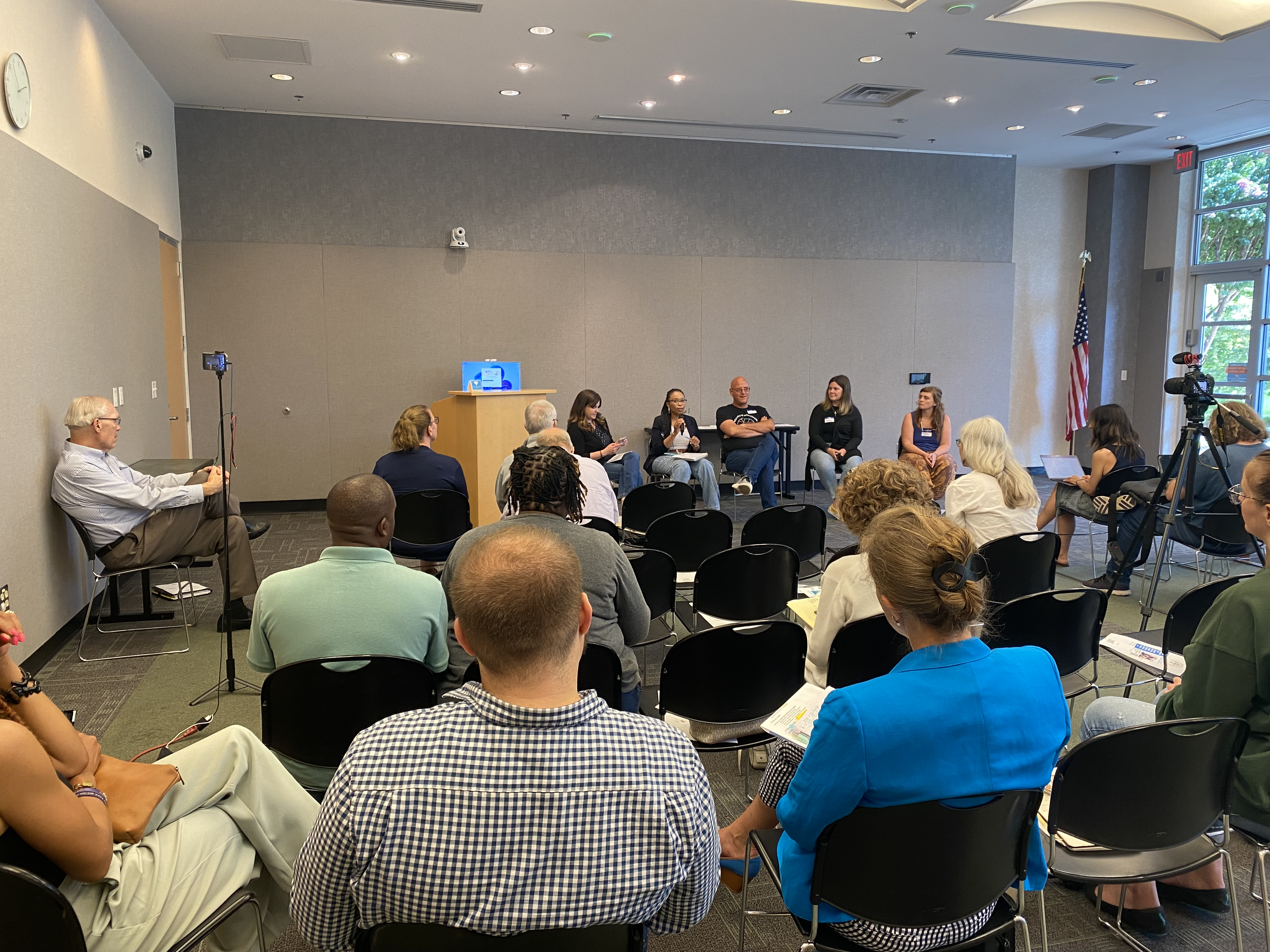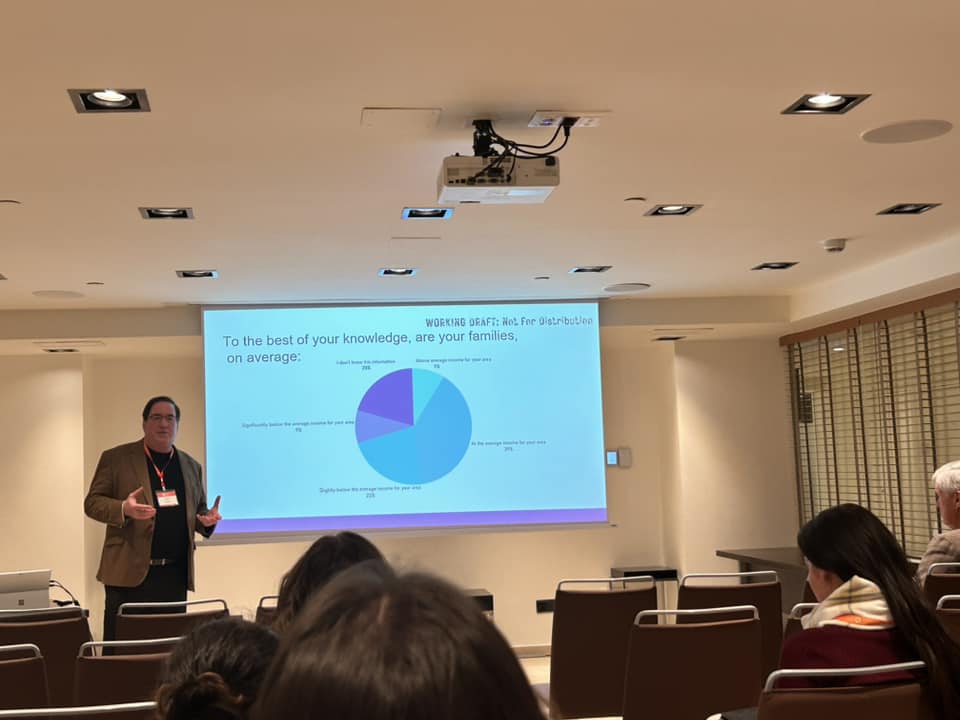Dynamism is the New Sustainability, Part 4: Closing Responsibly
At the Center, we have a different take on sustainability in the microschooling movement and in one word, it’s dynamism. Earlier we discussed...
4 min read
 Ashley Soifer
:
Aug 7, 2024 11:19:39 PM
Ashley Soifer
:
Aug 7, 2024 11:19:39 PM

At the Center, we have a different take on sustainability in the microschooling movement and in one word, it’s dynamism. Earlier we discussed sustainability, how the microschooling sector is different, how to avoid unrealistic pressures placed on founders and why microschools close.
How to Keep Your Doors Open If You Want To
Sometimes we hear from microschool founders who feel like they need to close due to facilities, finances, legal pressures, etc, however they want to stay open. For microschools that want to keep their doors open, it can be done.
Viable and Affordable Space
Aside from staffing, facilities are likely a microschool’s biggest ticket item in their budget. Being creative on the facility side can prove beneficial to a budget for many years to come. We recommend that microschools think through potential space-sharing arrangements that can keep costs down. Some possible options include: dance studios that only offer classes at night and have an empty space during the day, employers with a few empty offices or conference rooms that are available, a House of Worship that might be willing to rent to you low-cost (this is an arrangement that works well for many microschools whether or not you are faith-based), and so much more. We have seen microschools housed in yurts in a location that they aren’t paying rent on, microschools that meet daily at a local park, and shared space where multiple microschools are renting a building and sharing the space (plus sharing resources).
Budget and Finances
Microschool founders, do you know how much it costs to educate one child in your microschool? Factor in staffing, location, curricular components, technology, supplies, etc. Microschool founders aren’t in this to get rich (we talk to many of microschool founders that don’t pay themselves in year one). Founders often give scholarships that come out of their own pocket to families. Knowing exactly how much it costs to educate a child, and what your break even number of children is, is crucial when determining your budget and finances.
Another piece of guidance we often give to microschool founders who are struggling with their finances is to have help when it comes to scholarships. We love that microschool founders are truly there to serve everyone. As our 2024 Sector Analysis shows, microschools are not just for the wealthy, but most commonly serve families at or below the average income for their area. For microschools that are nonprofit, you have a governing board that can help with tuition assistance. For microschools that do not have a governing board, think about assembling an advisory board. This advisory board can help with scholarship applications (you can even remove family names and identifying information from the application) and can handle the conversations about granting or denying scholarships. Taking this pressure off the founder who knows these families intimately can be incredibly helpful in keeping finances on track.
Marketing
Marketing is a crucial part of keeping your doors open as you attract new families. There are so many ways to market your microschool (take a look at the blog post from our Hot Topic Webinar: Marketing your Microschool), but perhaps our favorite is word of mouth. Many founders will tell us that word of mouth is how they receive the majority of their new students.
Be transparent with your families. If you currently have 6 children enrolled and 10 is your break even number, let families know you really need to get to 10 kids. Ask them for their help. Give them specific talking points about your microschool, invite them to join you at your microschool’s table at community events and provide them with shirts. Incentivizing your families to help with marketing can also be a useful tool. Oftentimes microschools will provide a discount to families that have referred other families. For example, if Family A refers Family B to their microschool Family A gets 10% off of their tuition the month following Family B’s first month.
Partnerships
For anyone that knows the Center, you’ll know how excited we are about partnerships. Partnerships can look vastly different, but they all have the potential to help you keep your doors open.
Working with companies that require volunteer hours of their employees is a great way to get experts in a field into your microschool to teach about that subject. Looking for a graphic design class? Partnering with an employer who will send their graphic designer into your microschool to teach a class once a week can be win-win.
Who are the employers in your area? They might be looking to add a schooling option to their benefits package. Working with local employers can lead to employer-sponsored seats at your microschool where the employer is paying for their employees' children to attend. Perhaps it’s partial sponsorships, the microschool can lower their cost for an employee of a partner, the employer can cover a portion of the cost of tuition for the children of their employees that attend, and the family can pay the remaining balance. An arrangement like this can bring new families to your microschool and help these families have better access to your microschool with the employer covering a portion of the cost.
Of course, our favorite partnership is a full partnership microschool. These can happen with employers, municipalities, houses of worship, and more. In partnership microschools there is a host partner and a technical partner. The host partner provides resources (these may include facilities, technology, funding, marketing, etc). The technical partner handles the teaching and learning and the day-to-day operations of the microschool. Want to see a partnership microschool in action? Take a look at SNUMA, the first-ever public private partnership microschool.
Regulatory and Legal Pressures
Withstanding regulatory and legal pressures can feel overwhelming, especially when things are different not only state to state but jurisdiction to jurisdiction. Understanding your state’s frameworks is a good place to start. Here are some helpful resources:
Johns Hopkins Institute for Education Policy’s Homeschool Hub can help you to better understand your state’s homeschooling frameworks.
EdChoice’s School Starter Checklist can be a useful resource if you’re thinking about private school regulations for your state.
If you’re experiencing regulatory pressure, reach out to us at the Center at don@microschoolingcenter.org. We are happy to connect microschools experiencing regulatory pushback to our Senior Fellow for Legal for Affairs. If your issue is beyond our scope, we have great friends at other organizations that we can refer you to.
For microschools that are feeling the pressure and want to keep their doors open, we are here to help every step of the way. These founders and leaders are why this movement is flourishing and dynamic, they are actively engaged in forward progress for the movement.
If you’re ready to close, be on the lookout for Part 4 of this series, Closing Responsibly.

The National Microschooling Center leads a microschool panel in Virginia at a microschooling workshop hosted by VEOA.

At the Center, we have a different take on sustainability in the microschooling movement and in one word, it’s dynamism. Earlier we discussed...
.png)
Research by the National Microschooling Center surveyed founders of microschools that closed about the reasons for their closing. Learning from these...

As we celebrate National School Choice Week (the 15th anniversary!), we often think about the significant impact school choice has on the life of a...